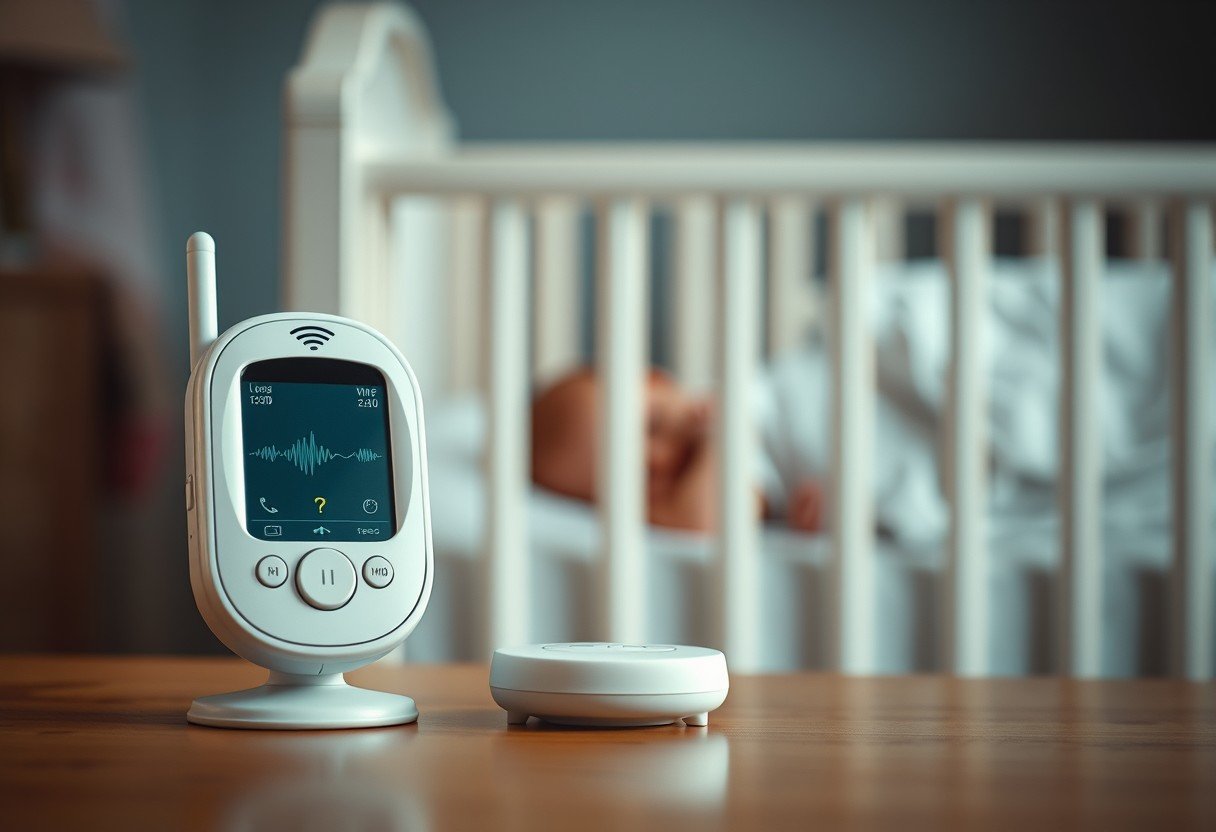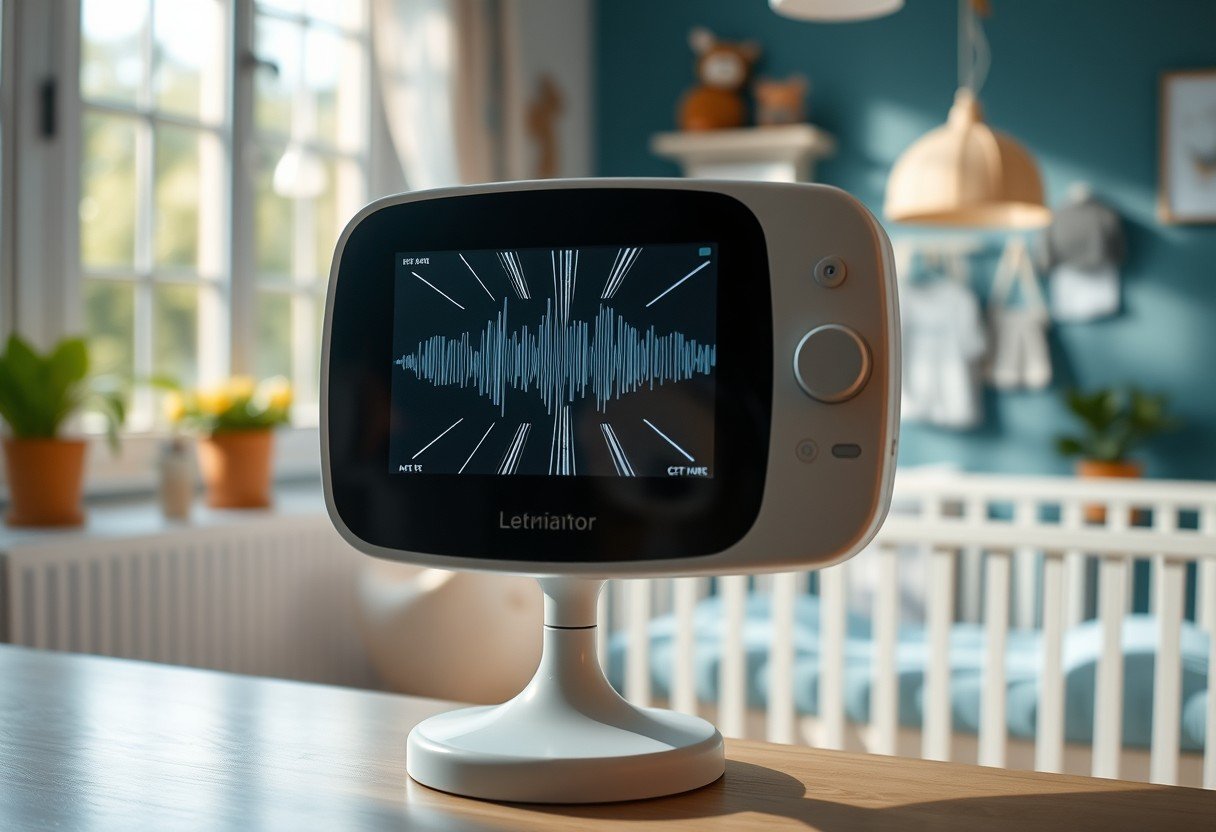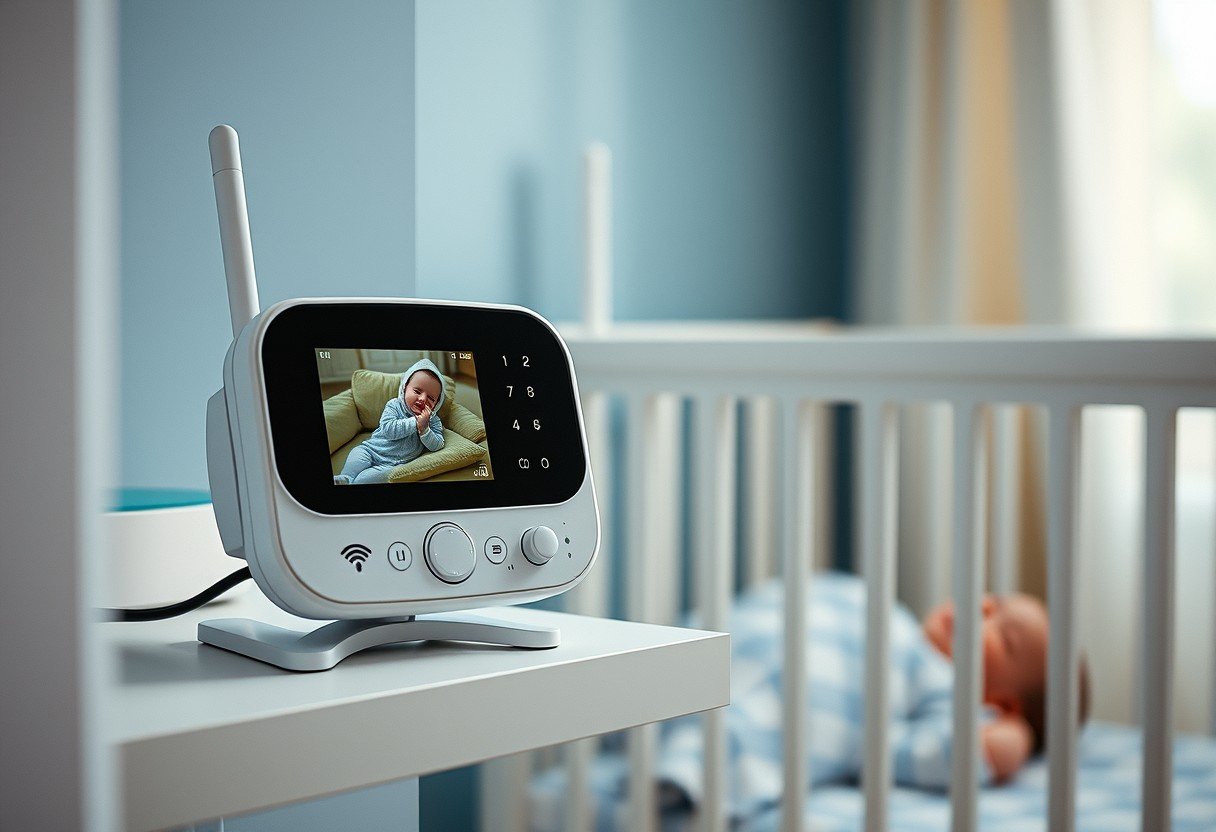Is your baby monitor making noise and keeping you on edge at night? Here is what is happening, where the noise often starts, how to fix it fast, when to try new settings, who to contact if it persists, and why certain homes have more interference. This simple guide explains the causes and the best fixes so you can get clear audio every time.
What Causes Static And Strange Sounds In Baby Monitors
Most noisy baby monitors are reacting to interference, power issues, or placement mistakes. Static, clicking, and pops often point to a weak or crowded signal. Beeps usually mean low battery or a lost link between units.
Analog models are the most prone to crackle. Digital systems with FHSS or DECT do better because they hop channels and filter noise. If your monitor uses the 2.4 GHz band, it competes with WiFi, cordless phones, and even microwaves.
Room noise can also flood the mic. Fans, air purifiers, and HVAC hum make the monitor work harder, which can raise the background hiss you hear. Smart models may amplify ambient sounds if sensitivity is set too high.
Distance matters. Thick walls, metal frames, and mirrors weaken signal quality. Many monitors list hundreds of feet of range, but indoor range is often closer to 30 to 150 feet depending on construction.
How Interference Works In Homes And Apartments
Most baby monitors and WiFi routers share the 2.4 GHz band. When both fight for space, you hear static or choppy audio. DECT monitors use 1.9 GHz, which avoids WiFi and is often quieter.
Dense buildings add extra noise. Neighbors devices, Bluetooth speakers, game consoles, and set top boxes all add to the radio crowd. The more wireless devices you run, the higher the chance you will hear random crackles or dropouts.
- Routers on busy channels can flood the band and cause hiss or lag.
- Microwaves leak short bursts that sound like crackling when heating.
Electronics placed close together couple noise into each other. Keep the baby unit and parent unit away from large metal objects and power strips to reduce hum and buzz.
Quick Checks To Fix Baby Monitor Noise
You can solve most audio problems in minutes with a few simple steps. Start with the fastest checks, then move to placement and settings. Work through these steps in order so you do not miss an easy fix.
- Power cycle both units by unplugging or turning off, wait ten seconds, then turn back on.
- Move the parent unit ten feet away from routers, TVs, and cordless phone bases.
- Reposition the baby unit at least three feet from the crib to avoid feedback and hum.
- Change the WiFi router channel to a less crowded one such as 1, 6, or 11, then test.
- Lower mic sensitivity or turn on VOX so only louder sounds trigger audio.
- If your monitor supports multiple channels, switch to a different channel or band.
Test after each step. If the sound clears, keep the new setup and monitor for a day. If not, continue until you find the cause. Document what helped in case the issue returns.
Best Placement For Clear Audio And Strong Signal
Place the baby unit on a stable shelf with clear line of sight to the room. Avoid corners where sound echoes and avoid soft surfaces that muffle the mic. Keep cables tidy to prevent a ground hum.
The parent unit should sit away from routers and smart hubs. Even a small move, like shifting it one room away from the router, can remove a constant hiss. As a rule, more height and fewer walls equals a cleaner signal.
Avoid placing units beside microwaves, fridges, or large aquariums. Those can reflect or absorb signal. If you live in a townhouse or apartment, try a central spot rather than an outside wall shared with neighbors.
Do a walk test. Slowly walk with the parent unit while someone speaks softly near the baby unit. Note where audio drops or distorts, then adjust placement to remove those weak spots.
Power, Batteries, And Charging Habits That Matter
Noise often comes from low power. When the battery dips, many monitors beep or add hiss as the radio struggles to hold a link. Use the supplied charger and avoid cheap cables that introduce hum.
Rechargeable packs can lose capacity after many cycles. If your unit is over two years old and runs hot or drains fast, replace the battery. Healthy power equals stable audio and fewer surprise alarms at night.
- Charge the parent unit fully, then run it down once a month to recalibrate the gauge.
- Clean battery and charger contacts with a dry cloth to remove dust and film.
- Plug into a different wall outlet if you hear a steady hum that changes with lights.
Power bricks can fail quietly and add noise. If you have two identical adapters, swap them and test. Keep spare batteries on hand so a weak pack does not ruin a night of sleep.
Noise Types And Likely Fixes At A Glance
Use this quick reference to match the sound you hear with the most common cause and the fastest fix. This table helps you troubleshoot in seconds without guessing.
| Noise | Most Likely Cause | Fast Fix |
|---|---|---|
| Static Or Hiss | WiFi crowding on 2.4 GHz, long distance, thick walls | Move units, change router channel, switch monitor channel |
| Clicking Or Popping | Channel hopping, microwave bursts, Bluetooth traffic | Test with microwave off, separate devices, try DECT mode |
| Feedback Screech | Units too close or facing each other | Increase distance, change angle, lower volume |
| Beeping Alarms | Low battery or link lost | Recharge or replace battery, re pair units |
| Hum Or Buzz | Ground loop or noisy power outlet | Use another outlet, avoid power strips, swap power brick |
If none of the above matches your sound, record a short clip. Many support teams can identify the pattern and guide you to a precise fix.
When To Upgrade Or Seek Support
If you still hear noise after placement, power, and channel changes, your home may be too crowded on 2.4 GHz. DECT audio monitors on 1.9 GHz or dual band smart models usually give cleaner results.
Look for features that cut noise in real life, not just on the box. FHSS, DECT, sound sensitivity control, and clear battery health info are worth paying for.
Contact the maker if the unit gets hot, smells like burning, or reboots during use. Ask about firmware updates because some models improve noise filters over time. If the device is under warranty, request a replacement test.
Upgrading can also bring longer range, sharper mics, and better night audio. Families in apartments often report big gains when moving from 2.4 GHz only models to DECT audio or newer dual band systems.
Safety And Sensitivity Settings That Reduce False Alerts
High mic sensitivity can turn air vents and white noise into constant alerts. Start in the middle setting, then raise only if you miss quiet cries. VOX helps by sending audio only when sound crosses a threshold.
Two way talk can cause feedback if volume is high. Lower the speaker volume before speaking, then bring it back up. Set quiet hours so alerts only sound when they matter most at night.
Place cameras and mics out of reach, and keep cords at least three feet from the crib. Use wall mounts or cable covers to prevent tugging and accidental unplugging.
Recheck settings after a power cut or firmware update. Some models reset to default and may raise sensitivity again without warning.
FAQ
Why is my baby monitor making static at night?
Nighttime WiFi use and closed doors raise interference and reflections. Move the parent unit away from the router, change the router to channel 1, 6, or 11, and lower mic sensitivity to cut the hiss.
How do I stop a baby monitor from beeping for no reason?
Beeping usually means low battery or a weak link. Fully charge the parent unit, re pair the devices, and test from a closer room to confirm the alert stops.
What frequency is best to avoid WiFi interference?
DECT audio monitors use 1.9 GHz and rarely clash with home WiFi. Many families get clearer sound by switching from 2.4 GHz only models to DECT or dual band systems.
Why do I hear clicking when the microwave runs?
Microwaves leak short bursts around 2.4 GHz that sound like clicks. Test with the microwave off, then move the parent unit farther from the kitchen to prevent the bursts from reaching it.
Can placement fix most baby monitor noise problems?
Yes, placement solves many issues. Raise the units, reduce walls in between, avoid metal surfaces, and keep other wireless gear a few feet away for a cleaner signal.









Leave a Comment